ISO 9001: Quality of service and continuous improvement
Quality is an inherent human factor that was already present in the production and construction craftsmanship of the Egyptians and Phoenicians. Historically, the client set the requirements that the craftsman had to meet. With industrialisation and mass production, product quality control became a more complicated task and quality management was born, as it was necessary to meet the established standards while reducing costs.
We often associate quality with a product, but this is a concept that can be established in any type of organisation, regardless of the sector in which it operates, the size of the company or the type of services it provides.
ISO 9001 is an internationally recognised standard that provides guidance for an organisation to satisfy its clients and stakeholders. The standard, which is entirely voluntary, provides us with the right tools to develop production processes effectively and as a result, products, or in our case quality services, which, even over time, maintain stability, profitability, and growth.
The objective in obtaining and maintaining ISO 9001 certification should not be to obtain the certificate itself, but to establish a robust system that helps us to meet the needs and expectations of our clients.
"Quality is not an act, it is a habit"
This phrase highlights the importance of cultivating a culture of quality in all aspects of the organisation.
One of the principles of quality management is client focus. In a service company like Vector Renewables, this client focus is fundamental. A satisfied client will come back to the same company and will recommend this type of service to other potential clients, creating a reputation that will generate new clients, making the business grow and be sustained over time.
The decision to establish a quality management system and to certify it on the basis of ISO 9001 must be taken by the management team of a company, which must also lead the management by establishing the policy and the main objectives.
Once the policy and general objectives have been established, the context of the organisation, the stakeholders, the strengths and weaknesses and the risks to the system are analysed. From these bases, the rest of the management system will be built, whose main document is the Quality Manual that describes the actions to be carried out. In addition, we will have a series of other documents, such as plans, programmes, instructions, specifications, formats and records, which support the system.
What is the most efficient methodology to achieve ISO 9001 maintenance and improvement?
Once the system is in place and even certified according to ISO 9001, it is essential to establish mechanisms for maintenance and continuous improvement. A system based on the methodology is recommended for this purpose:
- PDCA (Plan-Do-Check-Act), also known as the Deming cycle. The PDCA cycle allows processes to be planned so that they are properly resourced and managed, opportunities for improvement are identified and acted upon. Thus, preventive controls are established to minimise negative effects and potential non-conformities and maximise the use of improvement opportunities as they arise, and the system is adapted according to the problems or risks verified and opportunities identified, re-planning and thus restarting the cycle again.
Planning starts with the definition of specific, clear, unambiguous, and measurable objectives. We must establish actions to achieve them and indicators to measure their achievement, and then analyse whether or not they have been achieved in order to establish corrective and preventive measures, and replanning to achieve these and other new objectives.
In today's globalised and competitive market, having a standardised management system based on ISO 9001 helps us to manage the information and activities of the organisation, with the aim of satisfying the current and latent needs of our clients. It is a differentiating factor to increase client confidence and also helps us to improve, making the business more profitable and maintaining it in the future.
At Vector Renewables we have a QHSE (Quality, Health, Safety and Environment) department that works every day to implement measures to ensure the safety of our employees and the quality of the work performed for our clients. Since our beginnings, we have also been ISO 9001 certified on an annual basis, which allows us to act on the basis of well-defined quality standards. For further information, please contact Alejandra Urango, QHSE Specialist.
When you subscribe to the blog, we will send you an e-mail when there are new updates on the site so you wouldn't miss them.


